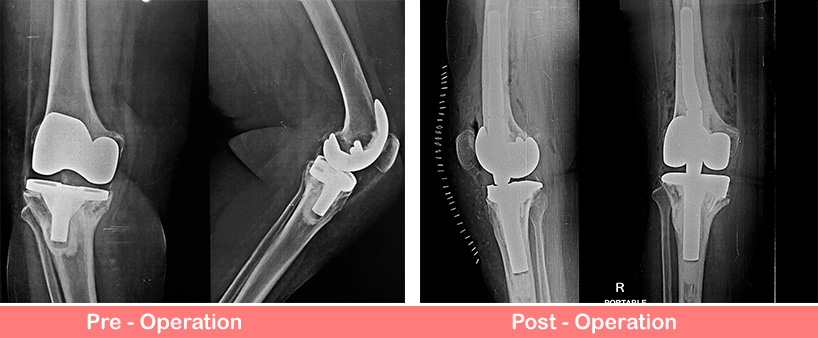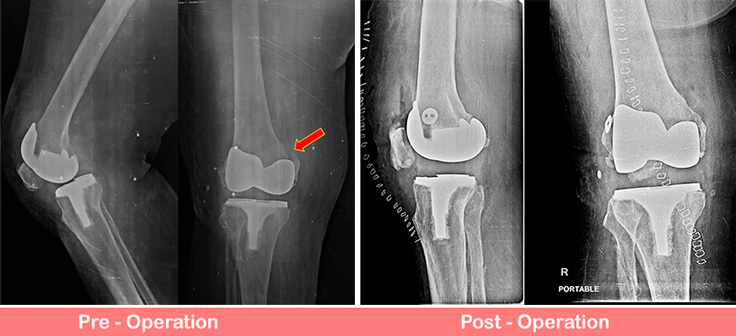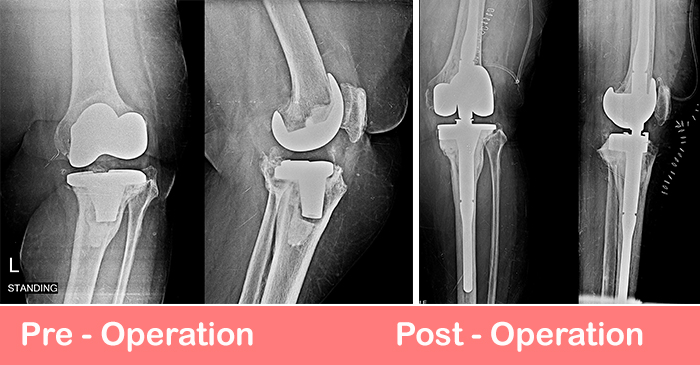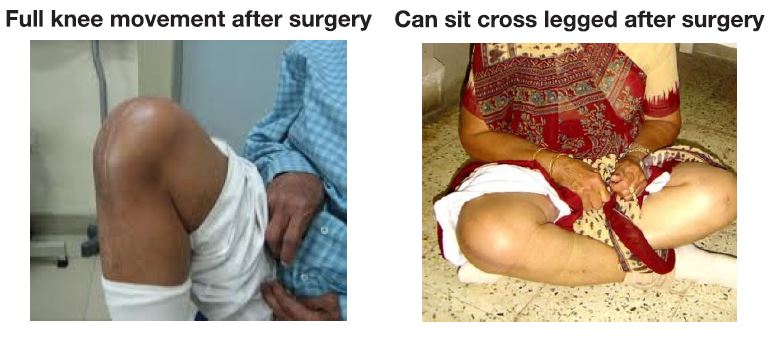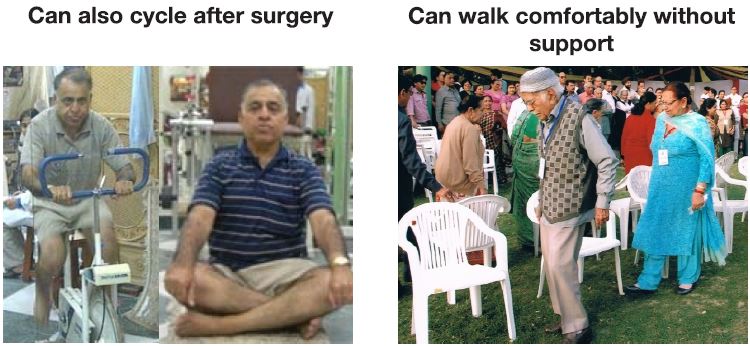77 years old lady operated case of bilateral total knee replacement done elsewhere in 2004. Since 2016 she was having pain in right knee with difficulty in walking and bearing weight. On examination there was joint effusion, tenderness and instability. Preoperative X-Ray was showing aseptic loosening of tibial component.
We ruled out infection and planned for revision total knee replacement using hinge knee prosthesis. Intraoperatively the femur was also loose and there were huge bone defects both in the tibia and femur. Patient underwent revision total knee replacement with hinge knee prosthesis with augments to overcome the bone defects. Now patient is comfortable and walking with support.

